A Day in the Life of a High Acuity Response Unit Paramedic
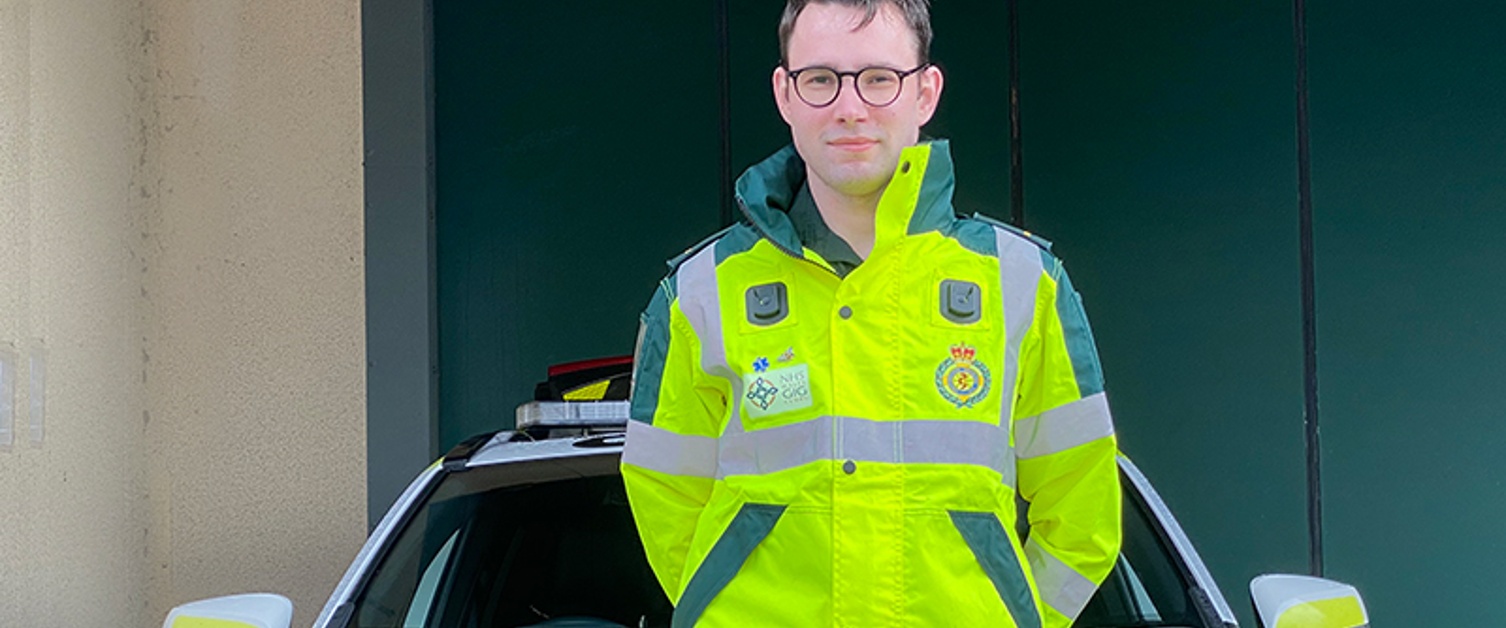
A PARAMEDIC who helps the most critically ill patients in North Wales has shared a unique glimpse into his role on the frontline.
Kieran McClelland, who is based in Dobshill, Flintshire, works on the Welsh Ambulance Service’s Cymru High Acuity Response Unit (CHARU), which launched in November.
From his rapid response car, the 24-year-old responds only to the most urgent calls, including cardiac arrests, road traffic collisions, major trauma and maternity emergencies.
Kieran, from Wrexham, has additional skills and equipment which enable him to deliver more advanced care to patients.
He said: “The paramedic role is so much more diverse now.
“Whether you’re a paramedic in the control room triaging patients over the phone, an advanced paramedic helping to keep more people at home or a high acuity paramedic like myself, we’re all bringing a different skillset.
“Personally, I entered the role for the critical care element as that to me is the most rewarding.
“There’s no better feeling when you’ve successfully resuscitated someone in cardiac arrest.
“As a CHARU paramedic who responds solely to the most urgent calls, critical care is 100% of my workload – it’s why this role is perfect for me.”
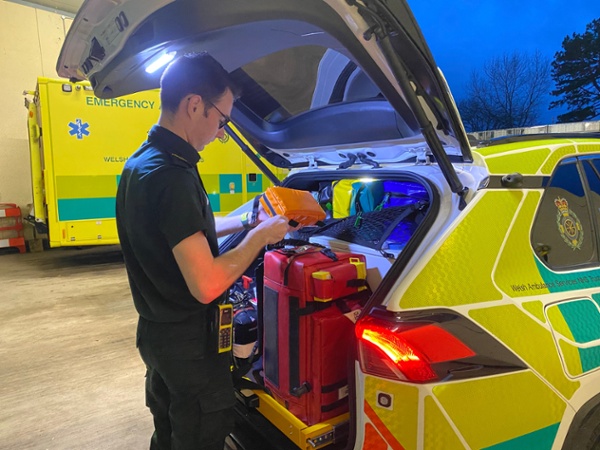
Kieran began his ambulance career as a volunteer Community First Responder, delivering first aid to people in his hometown in the precious minutes before an ambulance arrives.
He was an Urgent Care Assistant at St John Ambulance Cymru and later studied Paramedic Science in Swansea, qualifying in 2019 and joining the Welsh Ambulance Service full-time.
Kieran is a Practice Placement Educator who helps to integrate student paramedics into the service and was among the first paramedics to work a shift at Wrexham’s HMP Berwyn.
He is a member of the Trust’s Special Operations Response Team trained to deal with major incidents, as well as a Clinical Fellow at the Emergency Medical Retrieval and Transfer Service, working two shifts per month on an air ambulance.
Here, Kieran shares an insight into a recent 12-hour shift as a CHARU paramedic.
06.00
“A typical 12-hour shift can start as early at six in the morning,” says Kieran.
“Our fantastic Fleet Assistants have already made sure my car is clean and roadworthy, so I double-check I have the drugs I need and that equipment is in good working order.
“CHARU paramedics have an extra piece of kit to help people who are in cardiac arrest.
“The ‘Lucas-3’ device delivers mechanical chest compressions to someone whose heart has stopped, so I make sure it’s fully charged and ready to go.
“Every second counts when someone is in cardiac arrest, and early CPR and defibrillation could mean the difference between life and death.
“We are keen to drive up the current survival rates for people suffering a cardiac arrest in Wales, so it’s hoped that the CHARU initiative will improve outcomes for these patients.”
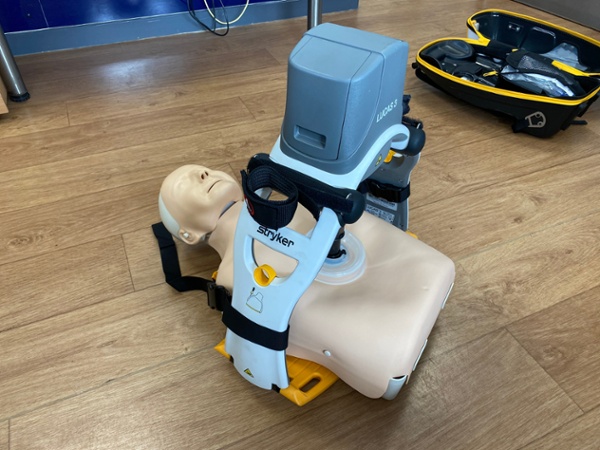
08.15
“Our first call comes in for an elderly female who has passed out in Wrexham.
“She’s breathing but unconscious, so this is categorised as a ‘Red’ call.
“Even though I’m on lights and sirens, some road users haven’t seen my approach while others appear to panic and drive erratically, so I need to navigate very carefully.
“My advice if you hear a siren or see blue lights is to stay calm, look for somewhere safe to move left and stop.
“I get to the address, where two Emergency Medical Technicians are already with the patient so I go in to lend additional support.
“The patient appears to have had a fall but it’s unclear how and when, and the fact that she is in and out of consciousness is concerning to me.
“We give the patient fluids and oxygen and decide to take her to hospital for further tests.
“While the patient is stable for now, I travel with the ambulance crew for extra support in case she deteriorates en route.”
09.50
“Given the patient is quite unwell, she’s admitted quickly into Wrexham Maelor Hospital.
“I book ‘clear’ so I’m free to respond to another call, and right on cue, our next call comes in.
“It’s another ‘Red’ call to reports of an elderly female with ineffective breathing, 12 miles away near the Shropshire border.
“Once again, there’s an ambulance crew already at scene, which is common when there’s a potential for a cardiac arrest situation.
“While the patient is unwell and probably does require a trip to hospital, her breathing is completely normal.
“It’s really important when you call 999 that you’re as accurate as possible when answering questions, which I know can be difficult when you or loved one are in distress.
“It means we can prioritise the call appropriately and protect our resources for those who need us most.
“I’m not required on this occasion so I leave the patient in the capable hands of the crew.”
11.30
“Our third call comes in to reports of a female having a seizure in Flint.
“Minutes after I set off, I’m stood down because another CHARU paramedic who is closer has been dispatched instead.
“For ‘Red’ calls, we send the nearest available resource as fast as possible.
“The control room decide that now is a good opportunity to give me a rest break, so I head back to base.”
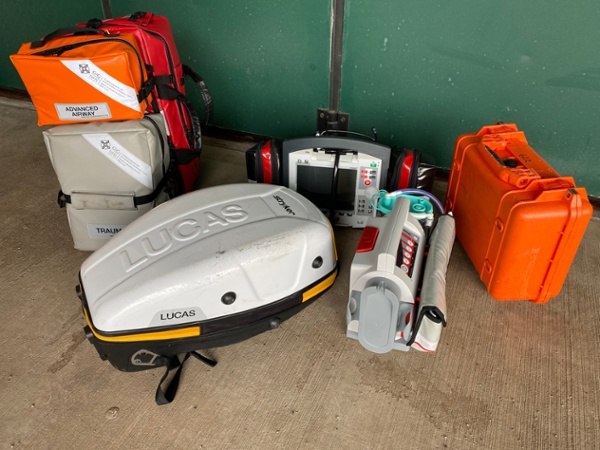
13.00
“A big part of the CHARU paramedic role is responding to cardiac arrests.
“In a cardiac arrest, we may perform something called ‘endotracheal intubation’ to help the patient to breathe.
“It’s a very delicate procedure, so I take the opportunity to hone my skills on a training manikin on station.
“I try to do this at least once every shift, and given my additional training, I also offer to practice the skill to other colleagues on station.”
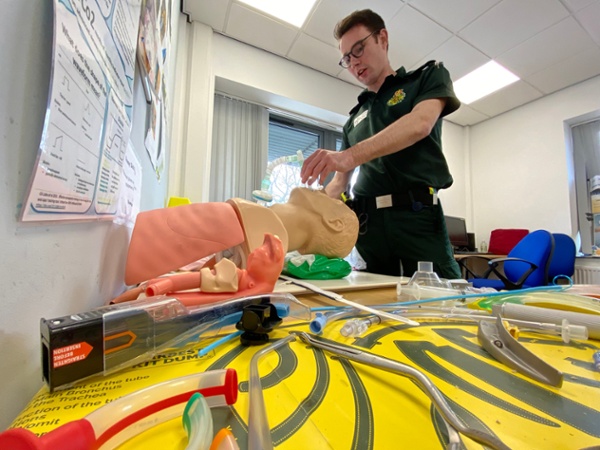
14.30
“Wrexham’s Glyndŵr University now offers a Paramedic Science degree and some of its students are on placement in Dobshill.
“I chat to one of the latest cohort about her time on the frontline so far, sharing experiences and pointing her to helpful resources.
“I assist on practical teaching days at the university, so it’s good to get to know our students better and strengthen relationships.”
16.15
“Another ‘Red’ call in – a male is having a seizure.
“I make my way on lights and sirens to Flint, where the man’s friend flags me down by the picturesque castle.
“The man is epileptic but hasn’t had a seizure for many years, so this is unusual for him.
“He’s stopped fitting now and is stable enough for me to begin a set of observations, which thankfully are within normal parameters.
“It quickly transpires that the patient doesn’t want to go to hospital.
“I determine that he’s safe to be discharged, so there’s a shared clinical decision with another healthcare professional – in this case, a nurse – regarding continuity of care.
“The ambulance that was en route to transport him to hospital is stood down, which means it’s now available to attend another patient.
“Our traditional handwritten notes have been replaced by an electronic Patient Clinical Record, and completing the necessary forms on an iPad makes life quicker and easier.
“It’s back to station.”
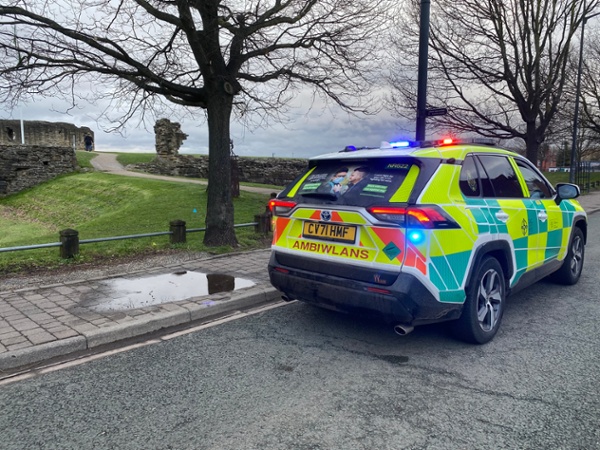
18.00
“Some shifts are back-to-back patients while others are steady.
“While none of today’s calls transpired to be life or limb, I’m a dedicated resource poised to respond the most critically ill patients in my community and that’s a good feeling.
“Critical care is what I relish, and I personally perform best in high-pressured situations, which is why the CHARU paramedic role suits me down to the ground.
“It’s back home to rest as I do it all again tomorrow.”
Editor’s Notes
Email Head of Communications Lois.Hough@wales.nhs.uk for more information.